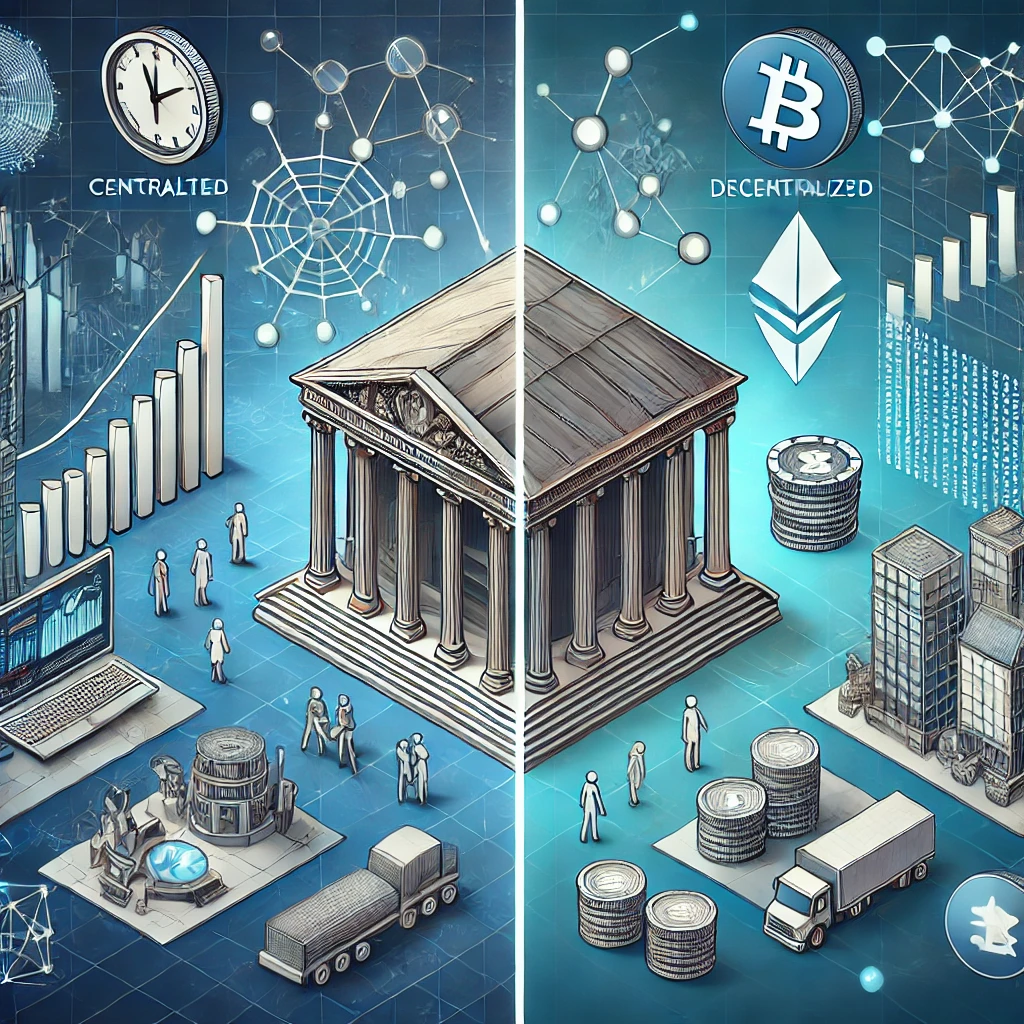Centralized vs. Decentralized Markets: A Comparative Analysis
The financial world is divided into two distinct market structures: centralized and decentralized. Both serve as vital mechanisms for facilitating trade, but they differ significantly in structure, function, and underlying philosophy. Understanding these differences is crucial for investors, traders, and businesses navigating modern financial ecosystems.
What Is a Centralized Market?
A centralized market is a structured environment where all trading orders are routed through a single exchange. This model ensures a unified price for securities and offers transparency and regulation to investors.
Key Features
- Unified Price Mechanism: Centralized markets quote a single price for assets, eliminating discrepancies and making price movements more predictable.
- Transparency: All trade data, including quotes and executed trades, is visible, enabling informed decision-making.
- Clearinghouses: Transactions are routed through clearinghouses, reducing counterparty risk by ensuring both buyers and sellers deal with the exchange rather than each other.
Examples
Prominent centralized markets include:
- Stock Exchanges: The New York Stock Exchange (NYSE) and Tokyo Stock Exchange (TSE) operate on centralized models where trades are matched via a central platform.
- Commodity Markets: Exchanges like the Chicago Mercantile Exchange (CME) use a centralized approach for trading commodities.
Advantages
- Fair pricing through a single marketplace.
- Reduced counterparty risk due to clearinghouse involvement.
- High transparency and regulatory oversight, ensuring investor protection.
Limitations
- Limited flexibility for participants as all trades must occur through the central exchange.
- Potential inefficiencies due to reliance on a single point of control.
- Susceptible to system-wide disruptions in case of technical failures.
What Is a Decentralized Market?
In contrast, a decentralized market eliminates the need for a central exchange by enabling buyers and sellers to trade directly using technology. These markets rely on peer-to-peer networks and are particularly prevalent in the digital age.
Key Features
- Peer-to-Peer Trading: Decentralized markets connect buyers and sellers directly without intermediaries.
- Flexibility: Participants can access multiple trading platforms and explore varying price points.
- Virtual Market Integration: Blockchain technology powers many decentralized markets, facilitating cryptocurrency transactions.
Examples
- Foreign Exchange (Forex): Currency trading occurs globally without a central hub, enabling traders to find competing rates from different dealers.
- Real Estate: Buyers and sellers often complete transactions directly, bypassing centralized clearinghouses.
- Blockchain and Cryptocurrencies: Platforms like Bitcoin and Ethereum operate as decentralized financial ecosystems.
Advantages
- Freedom from regulatory constraints, allowing for greater flexibility.
- Reduced transaction costs due to the absence of intermediaries.
- Resilience against single-point failures.
Limitations
- Lack of oversight increases risks of fraud and market manipulation.
- Difficulty enforcing legal frameworks.
- Price discrepancies due to fragmented markets.
Emerging Trends: The Rise of Decentralized Markets
The advent of blockchain technology and digital currencies has accelerated the growth of decentralized markets. By enabling direct peer-to-peer transactions and offering greater anonymity, decentralized markets are becoming a preferred choice for many modern traders.
Decentralized Currency
Cryptocurrencies like Bitcoin and Ether operate without the need for central banks, providing users with autonomy over their finances. This innovation has fueled the growth of decentralized virtual markets, though debates over regulation persist.
Hybrid Models
Some platforms are exploring hybrid models that incorporate the transparency of centralized markets with the flexibility of decentralized ones. This approach aims to combine the best of both worlds, addressing concerns like regulatory compliance and transaction efficiency.
The Bottom Line
Centralized and decentralized markets cater to different needs and philosophies. Centralized markets excel in providing stability, transparency, and regulatory protection, making them ideal for traditional asset classes. On the other hand, decentralized markets champion flexibility, autonomy, and technological innovation, particularly in digital and emerging asset spaces.
Understanding the strengths and limitations of each market structure allows investors to align their strategies with their objectives. Whether you prefer the structured environment of centralized markets or the dynamic possibilities of decentralized platforms, the choice ultimately depends on your trading goals and risk appetite.
Get Started with your Stock Investments today with MINTALPHAA.
Get deeper insights into the crypto market’s weekly trends discussed on our Spotify podcast.
